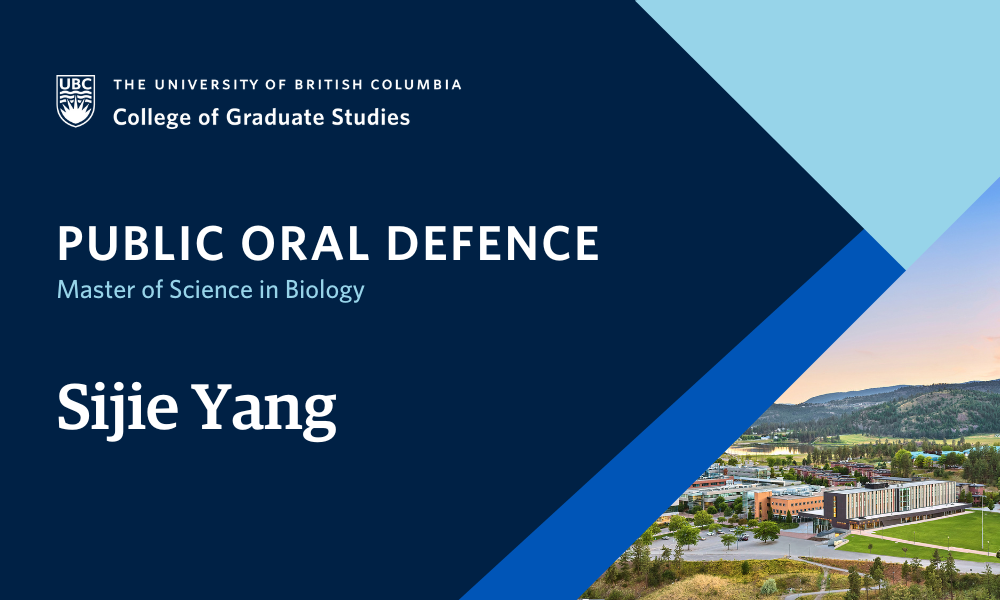
- This event has passed.
Thesis Defence: Regulation of the phagocytic activity of astrocytes by neuroimmune mediators endogenous to the central nervous system
February 27, 2024 at 2:00 pm - 6:00 pm

Sijie Yang, supervised by Dr. Andis Klegeris, will defend their thesis titled “Regulation of the phagocytic activity of astrocytes by neuroimmune mediators endogenous to the central nervous system” in partial fulfillment of the requirements for the degree of Master of Science in Biology.
An abstract for Sijie Yang’s thesis is included below.
Defences are open to all members of the campus community as well as the general public. Please email andis.klegeris@ubc.ca to receive the Zoom link for this defence.
ABSTRACT
The phagocytic activity of glial cells is essential for maintaining normal brain function and its dysfunction may contribute to the central nervous system (CNS) pathologies, including neurodegenerative and demyelinating diseases. The non-neuronal glial cells include microglia and astrocytes. Phagocytic activity is one of the well-established neuroimmune functions of microglia. Although emerging evidence indicates that astrocytes can also function as non-professional phagocytes of CNS in humans and rodents, limited information is available about molecular mechanisms that regulate this function. To address this knowledge gap, I studied modulation of the phagocytic activity of human U118 MG astrocytic cells and murine primary astrocytes by five CNS inflammatory mediators and bacterial endotoxin lipopolysaccharide (LPS).
Data in chapter two demonstrate that LPS and cytochrome c (CytC) upregulated, while interferon (IFN)-γ downregulated, phagocytosis of latex beads by human U118 MG astrocytic cells and phagocytosis of synaptosomes by murine primary astrocytes. Interleukin (IL)-1β and tumor necrosis factor (TNF)-α had no effect on the phagocytic activity of human astrocytic cells but upregulated this function in murine astrocytes. Varying effects of combinations of the above inflammatory mediators were observed in the two cell types studied. LPS- and CytC-induced phagocytic activity of human astrocytic cells was partially mediated by activation of toll-like receptor 4 (TLR4). By monitoring other functions of astrocytes, I concluded there were no correlations between the effects of the mediators studied on astrocyte phagocytic activity and their secretion of cytokines, cytotoxins, or glutamate.
In chapter three, I demonstrate that adenosine 5’ triphosphate (ATP) upregulated phagocytosis of latex beads by human astrocytic cells and murine primary astrocytes. ATP-induced phagocytic activity of human astrocytic cells was partially attributed to the activation of purinergic P2X7 receptor (P2X7R). Additionally, ATP exposure resulted in increased IL-8 secretion and intracellular calcium levels in human U118 MG astrocytic cells. While these findings illustrate a correlation between intracellular calcium concentration and phagocytic activity, further in-depth investigation is warranted to define this relationship.
My study identified five candidate CNS regulators of astrocyte phagocytic activity. Future investigation of molecular mechanisms behind this regulation could identify novel therapeutic targets allowing modulation of this astrocyte-mediated clearance mechanism in CNS pathologies.